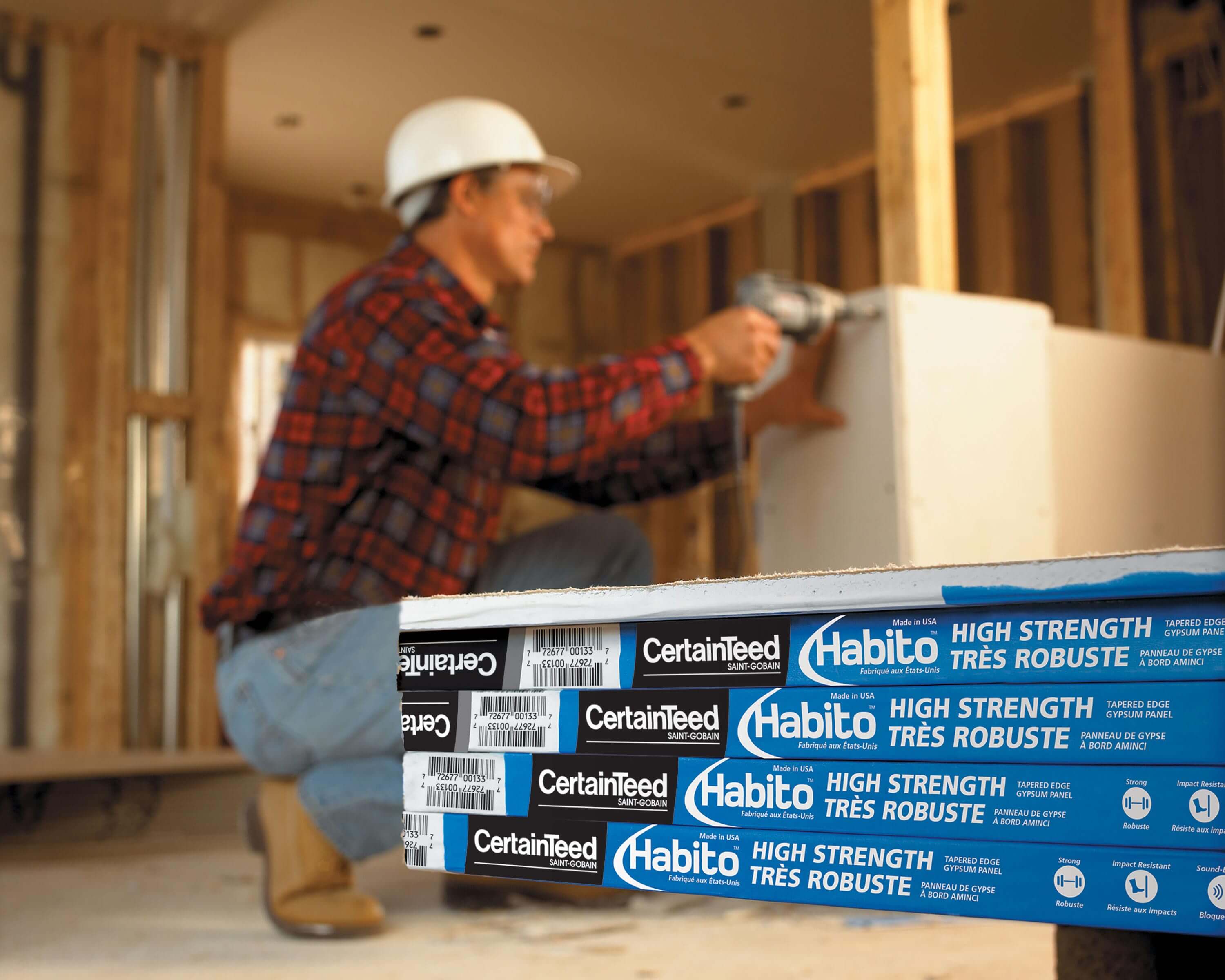
Home buyers may flip over an exotic hardwood floor or marble kitchen countertop, but the innovation that goes into the bones of the house, and what covers them, makes the real difference in terms of comfort and durability.
Gypsum board, or drywall, is far from new building material. For more than a century, and especially since the 1950s, it’s replaced the old lath and plaster process used for interior wall and ceilings finishes. Still, new innovations made to gypsum over the past decade are helping it meet evolving consumer demands and code requirements.
“All around us are gypsum board walls, and we in the industry get excited about them, but you can’t expect homeowners to get as excited as they do about that stainless-steel refrigerator or the new faucet or door handle,” says Stephen Meima, Executive Director of the Gypsum Association.
“Nonetheless, a lot of innovation has gone into that gypsum wall and it’s there for numerous reasons, the biggest of which is its fire-resistant properties.”
Meima points to several innovations his organization’s members—North American gypsum manufacturers—have made that have elevated the boards beyond their role as passive fire restraint systems and the structural support for hanging artwork.
Taking a Beating
While not as common for residential buildings, abuse- and impact-resistant boards are extremely popular in schools, hospitals and other high-traffic areas where builders are concerned with soft-body impact. “These boards are incredible in terms of the resistance they afford, to stand up to being punched, kicked or scraped,” Meima says.
There may be a growing interest, however, in durability in residential builds, especially when one considers urban populations and the growth in multi-family units. Earlier this year CertainTeed unveiled its Habito high performance drywall, which it calls the strongest .” wallboard available. “It can hold up to 30 lbs. off a single screw, just by going into the face of the board,” says Tom Prokop, Innovation & Product Marketing Manager for CertainTeed Gypsum at Saint-Gobain. “There’s no need for threaded drywall anchors or nailing to wall studs.”
In addition to the durability and fixing capabilities, Prokop notes that Habito helps to satisfy another area of growing importance to Canadian builders: acoustics.
The Sound of Silence
While wallboards acoustical performance has been of interest for several years, recent code changes in Canada are amping up its importance.
Whereas traditionally an interior product’s acoustical performance was
tied to STC (Sound Transmission Class), the National Building Code of Canada 2015 raised sound control requirements to a new level by linking it to the product’s ASTC (Apparent Sound Transmission Class).
This stricter measurement incorporates the single transmission of sound through a product like STC, but also the ability for sound to flank the board, travel around it or diagonally through it, or through elements like an outlet box.
It’s raised more discussions around acoustical performance. “ASTC is definitely more critical, and more closely resembles reality,” Prokop says. Achieving such a high degree of sound-resistance is typically done using two boards or a resilient channel. It’s more work and more complicated.
That’s why Prokop points to developments like his company’s SilentFX acoustic system. The system combines noise-reducing, laminated drywall with a sound-dampening, viscoelastic polymer into a single board.
It’s not just code driving the demand for greater sound controls, but consumers themselves, Prokop says. “We all know houses are getting more expensive. Homeowners are becoming more demanding and more educated,” he says. “I know I’ve bought multiple homes and each time I buy one the checklist based on past experiences grows.”
“We are also now living closer to our neighbours, making acoustics that much more important.”
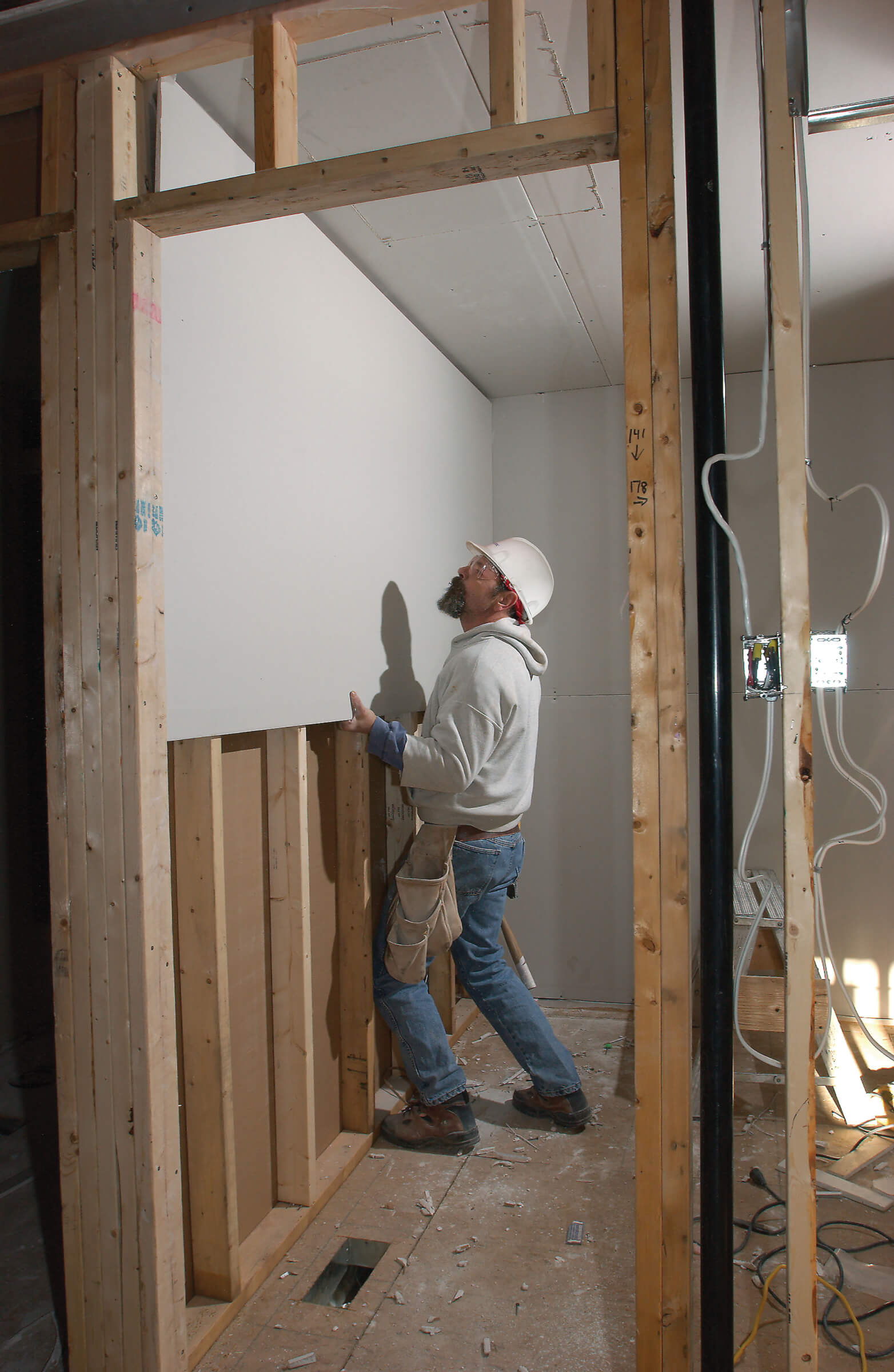
Photo courtesy of Gypsum Association
—
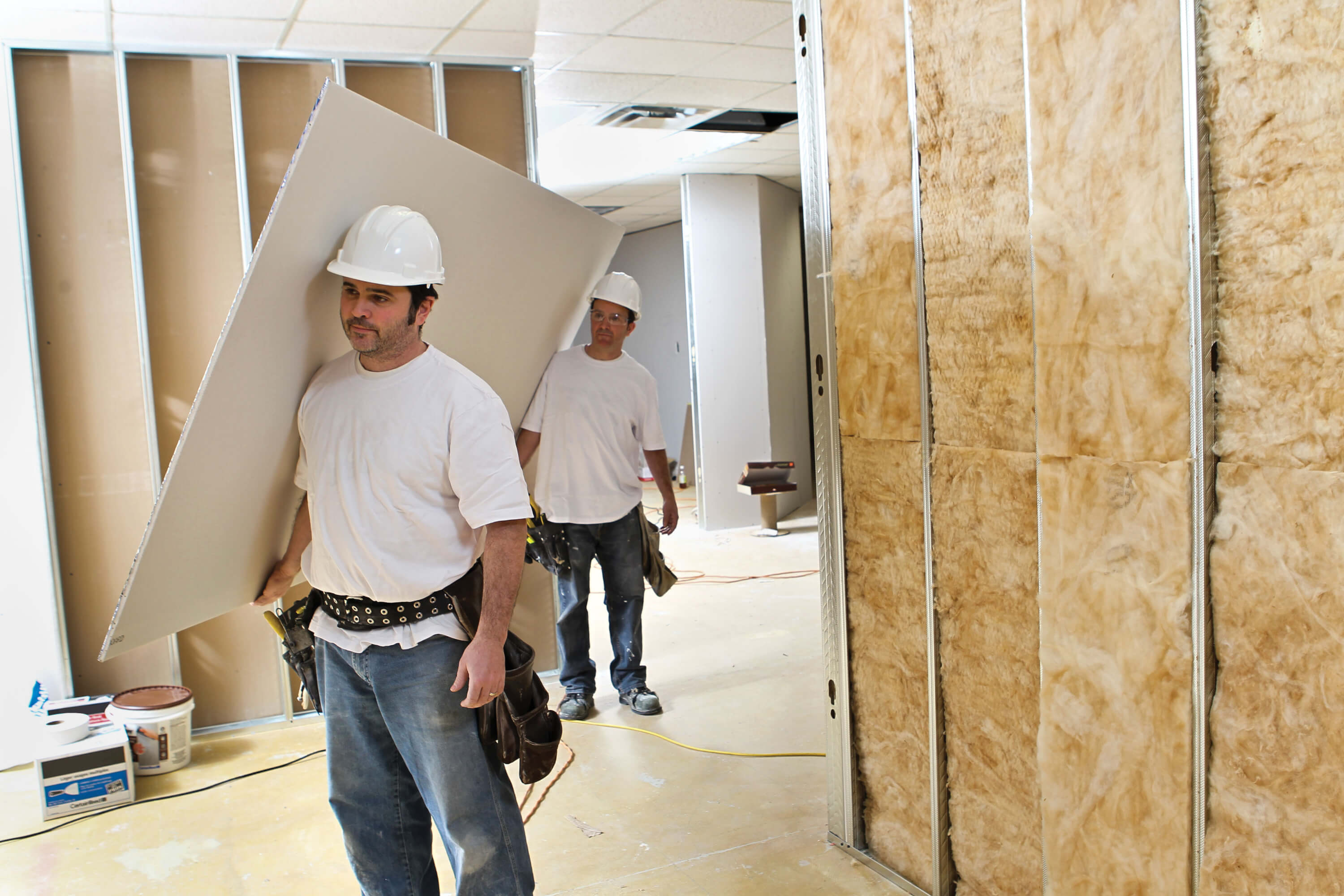
Photo courtesy of Gypsum Association
—
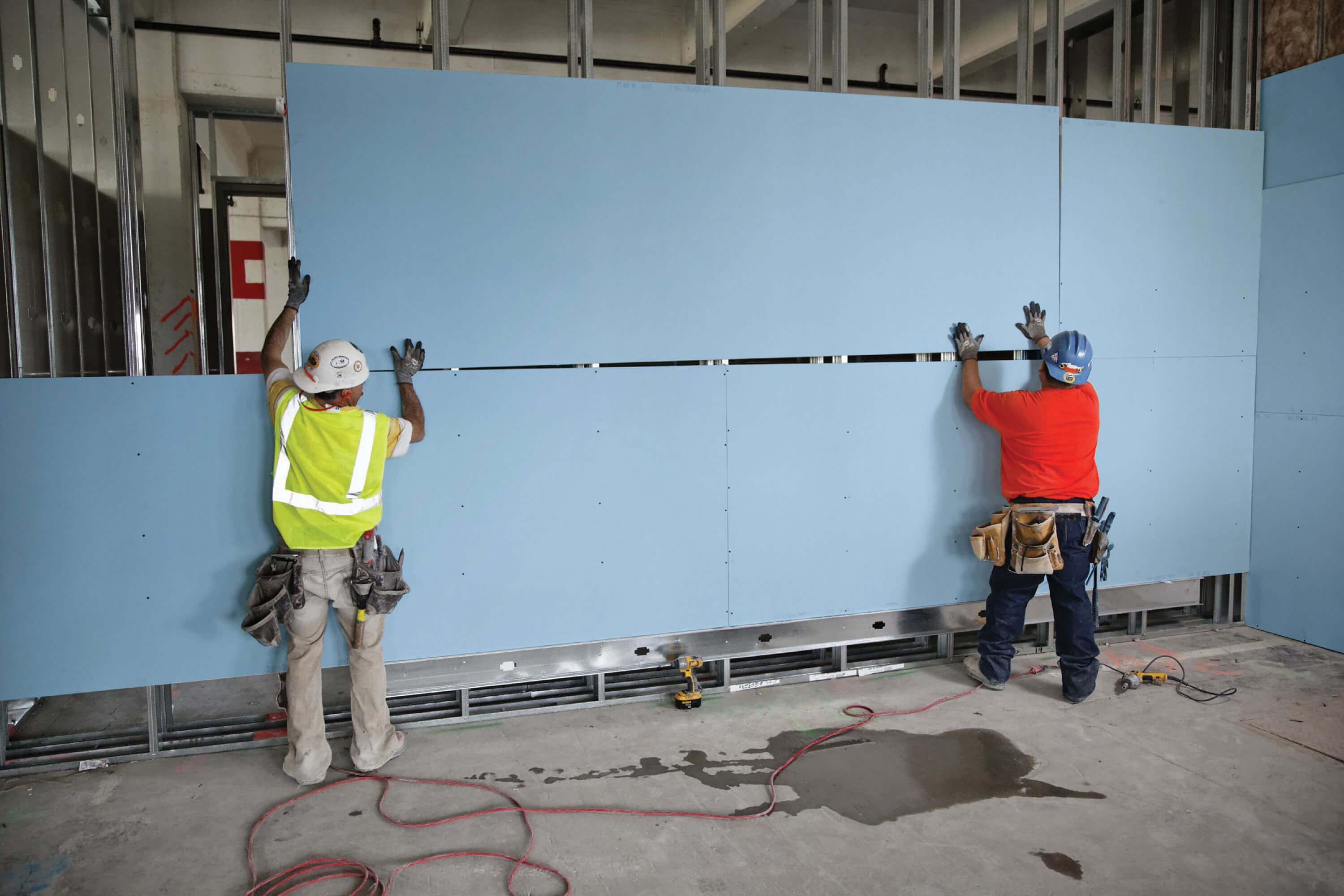
Photo courtesy of Gypsum Association
Typically, of course, it’s external walls and those between units that need greater sound control. Knowing which rooms and walls need better sound control can also be a bit of common sense; builders and specifiers need to consider what householders want to hear and what they obviously won’t.
“Generally, no one wants to hear their neighbours, but if I’m in the living room, I want to hear what the kids are doing in the basement,” Prokop laughs. “That’s when silence is the worst possible thing.”
Inside Out
Use for gypsum as exterior sheathing represents another major development coming from the manufacturers, and a further rethinking of what can be done with the material.
Designed to act as an underlayment for siding materials such as metal, vinyl, masonry, shingles or wood, this non-combustible, moisture-resistant gypsum board typically has a water-resistant core and facing of water-repellent paper or fiberglass mesh.
It’s appropriate for use as sheathing, but also for soffits, and ceilings for porches and overhangs, notes the Gypsum Association.
Healthier Homes
As the housing envelope becomes ever-more airtight and there are fewer air exchanges, air quality becomes a greater consideration.
“Formaldehyde and other VOCs (volatile organic compounds) can get trapped, and so it’s incumbent on us manufacturers to create solutions that address this,” Prokop says. That’s why he says CertainTeed developed its AirRenew Drywall.
This product isn’t simply environmentally-friendly, but it sucks toxins from the air and turns them inert, suggests Prokop. “That ties into occupant comfort, particularly someone with enhanced reactions to things like Formaldehyde, where it will give the homeowner headaches and other problems.”
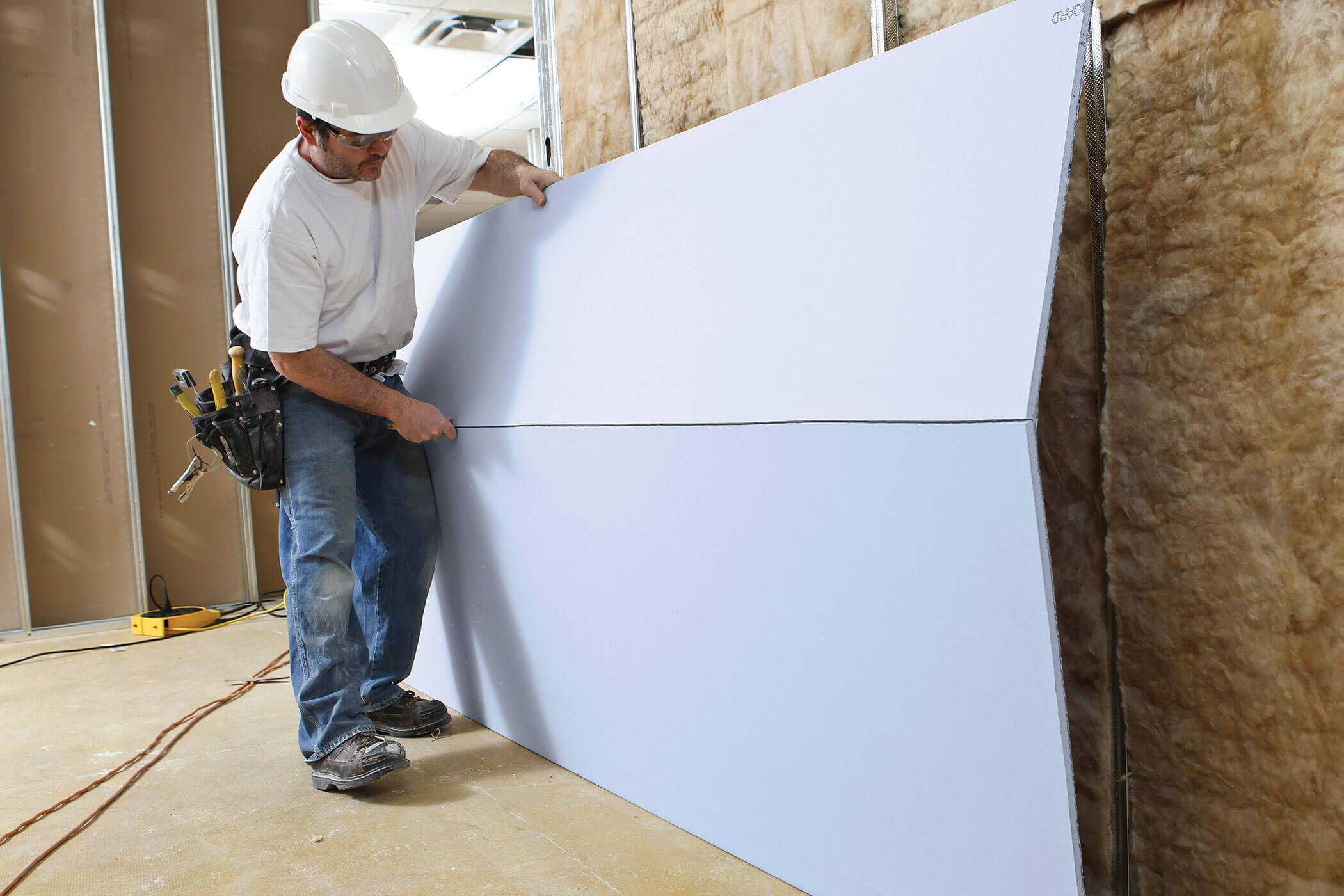
Photo courtesy of Gypsum Association
The Right Board
Knowing which is the right type of gypsum board for any given application can be tricky with so many options.
In 2015, the Gypsum Association did a survey, largely targeted at architects, to determine knowledge levels around gypsum options. They found that building specifiers needed help, Meima says, and so they developed a webbased application devoted to the proper specification, installation, storage and use of specialized performance gypsum panel products (found at www.gypsum.org).
“Our tool is rich with information, including sound control information. Controlling sound has become so very important in dense population centres,” Meima reiterates. “So, we have a very rich sound component in this tool.” Even with the need for greater awareness, the trend over the past decade has been that specialty boards have been gaining share compared with traditional drywall. Meima theorizes, “this is in response to manufacturing realizing that certain qualities are needed and innovating to make them happen.”
Savvy home builders are using the properties of specialty gypsum to differentiate themselves suggests both Prokop and Meima, although they admit it’s often just by creating a home in which the comfort speaks for itself “People walking through show homes can hear and feel the difference,”
Meima says. “They may not know anything about STC, but they know what they like.”
“Builders armed with the right resources will know how to make it feel better. So it doesn’t need to come through a better-looking refrigerator, but that sale can come through better walls, assembly and construction.”
